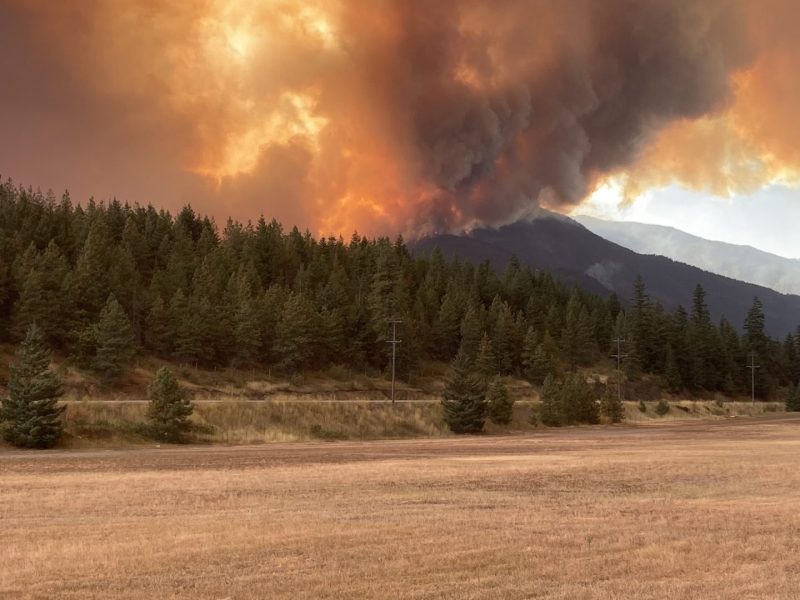The impact of a dramatic turn in the provincial wildfire situation last week is still being calculated as the smoke clears in the Okanagan.
Dramatic footage from the McDougall Creek wildfire in West Kelowna focused on the impacts to residential and recreational properties, but the smoke plume hit orchards as well as vineyards, where veraison – a period when grapes acquire colour and flavour compounds and are more susceptible to the impacts of smoke – was underway.
The smoke curtailed harvest activity in Central Okanagan orchards as well as tourist traffic, which was banned as of August 19. (The order was largely lifted three days later, prompting the region’s wineries and agri-tourism operators to alert followers to the good news lest the tourist season be lost entirely.)
But livestock in the Central and North Okanagan as well as the Thompson-Nicola and Squamish-Lillooet regions were also impacted by the growing number of significant wildfires, including the Adams Lake, Ross Moore Lake and Kookipi Creek blazes.
Staff with the BC Ministry of Agriculture and Food report that 6,500 cattle and 8,200 poultry were subject to evacuation orders or alerts. A total of 58 farm premises were under evacuation orders, with 1,000 livestock relocated, and a further 110 premises were subject to alerts as of August 22.
All told, wildfires have consumed nearly 1.8 million hectares this year to date, making it far and away the province’s worst wildfire season on record.
While the fires stole headlines from the ongoing drought, water curtailments remain in place in several watersheds as conditions worsen.
Three water systems are now subject to temporary fish protection orders, affecting a total of 443 licensed or transitioning users in the Bessette Creek, Lower Salmon River and Tsolum River watersheds. Compliance and enforcement activities are also continuing across the province as natural resource officers engage with users to check their status.
Provincial drought ratings will be updated August 24, with a further deterioration in conditions expected. As of last week, 28 of the province’s 34 basins were at drought Level 4 or 5, the most severe on the province’s six-level scale.


 Cattle head to market
Cattle head to market